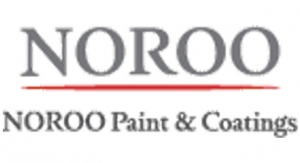04.06.17
Demand for wood stain is forecast to rise 4.3% per year to $1.7 billion in 2020. Furniture and decking applications account for nearly 60% of demand for wood stain.
Cabinet applications will see the fastest advances in stain demand, due to the combination of strong gains in cabinet sales and the sustained popularity of solid wood cabinetry. These and other trends are presented in Wood Coatings Market in the US, a new study from The Freedonia Group, a Cleveland-based industry research firm.
Wood stain sales will be driven by:
• convenience of stain-and-sealer combinations
• continued popularity of solid wood materials in furniture, stain’s primary outlet, as well as cabinets, materials that are more likely to be stained to accentuate the appearance of wood grain
• rising stain prices due to increasingly advanced formulations, like stain-and-sealer-in-one
US demand for wood coatings overall -- including stains, paints, sealers and primers -- is projected to increase 4.2% annually through 2020. Gains will derive largely from residential markets, where healthy increases in new housing construction and moderate advances in residential maintenance activities will benefit both new and maintenance wood coatings. Among new coatings, both on-site and manufacturer-applied coatings will see strong growth. Competition with nonwood materials will restrain wood coatings from further advances. Overall, growth is expected to slow slightly from that of the 2010-2015 period as construction expenditures normalize after the particularly strong growth of a post-recession recovery.
Cabinet applications will see the fastest advances in stain demand, due to the combination of strong gains in cabinet sales and the sustained popularity of solid wood cabinetry. These and other trends are presented in Wood Coatings Market in the US, a new study from The Freedonia Group, a Cleveland-based industry research firm.
Wood stain sales will be driven by:
• convenience of stain-and-sealer combinations
• continued popularity of solid wood materials in furniture, stain’s primary outlet, as well as cabinets, materials that are more likely to be stained to accentuate the appearance of wood grain
• rising stain prices due to increasingly advanced formulations, like stain-and-sealer-in-one
US demand for wood coatings overall -- including stains, paints, sealers and primers -- is projected to increase 4.2% annually through 2020. Gains will derive largely from residential markets, where healthy increases in new housing construction and moderate advances in residential maintenance activities will benefit both new and maintenance wood coatings. Among new coatings, both on-site and manufacturer-applied coatings will see strong growth. Competition with nonwood materials will restrain wood coatings from further advances. Overall, growth is expected to slow slightly from that of the 2010-2015 period as construction expenditures normalize after the particularly strong growth of a post-recession recovery.








